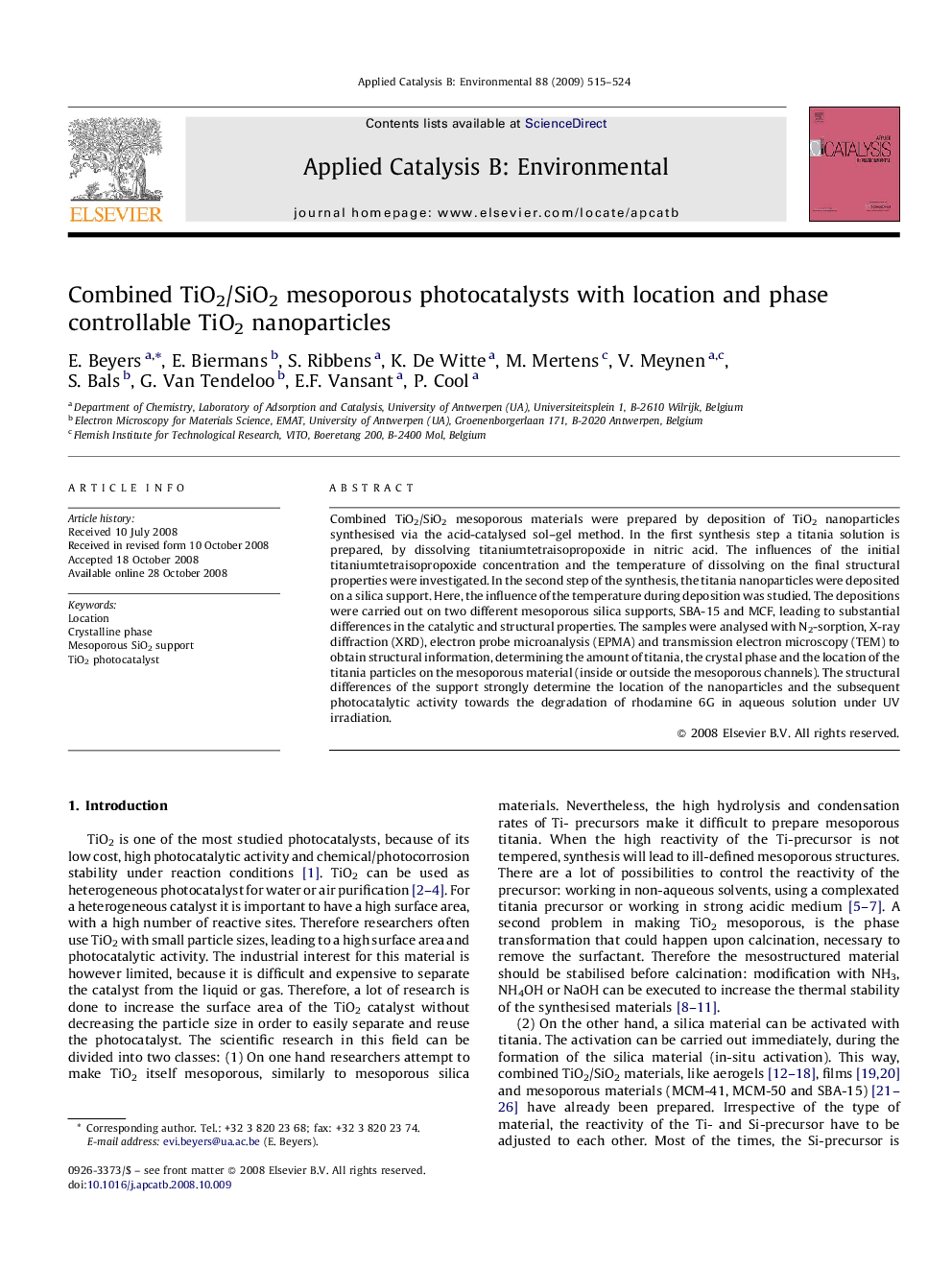| Article ID | Journal | Published Year | Pages | File Type |
|---|---|---|---|---|
| 48003 | Applied Catalysis B: Environmental | 2009 | 10 Pages |
Combined TiO2/SiO2 mesoporous materials were prepared by deposition of TiO2 nanoparticles synthesised via the acid-catalysed sol–gel method. In the first synthesis step a titania solution is prepared, by dissolving titaniumtetraisopropoxide in nitric acid. The influences of the initial titaniumtetraisopropoxide concentration and the temperature of dissolving on the final structural properties were investigated. In the second step of the synthesis, the titania nanoparticles were deposited on a silica support. Here, the influence of the temperature during deposition was studied. The depositions were carried out on two different mesoporous silica supports, SBA-15 and MCF, leading to substantial differences in the catalytic and structural properties. The samples were analysed with N2-sorption, X-ray diffraction (XRD), electron probe microanalysis (EPMA) and transmission electron microscopy (TEM) to obtain structural information, determining the amount of titania, the crystal phase and the location of the titania particles on the mesoporous material (inside or outside the mesoporous channels). The structural differences of the support strongly determine the location of the nanoparticles and the subsequent photocatalytic activity towards the degradation of rhodamine 6G in aqueous solution under UV irradiation.
